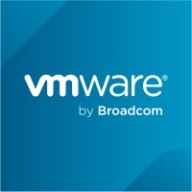

IBM Turbonomic and VMware Aria Automation compete in the IT management and automation category. IBM Turbonomic has the upper hand in user-centric automation and capacity planning tools, while VMware Aria Automation is favored for its flexible blueprint designs and integration capabilities.
Features: IBM Turbonomic comes with robust automation, VM rightsizing, and efficient resource management tools, including unique planning modules. VMware Aria Automation excels with flexible blueprint designs, multi-machine configurations, and comprehensive orchestration for complex infrastructures.
Room for Improvement: IBM Turbonomic needs an improved dashboard and enhanced reporting, with users experiencing issues with Flash-based GUIs. VMware Aria Automation could benefit from simpler cloud integration, better third-party solution compatibility, and clearer documentation.
Ease of Deployment and Customer Service: Both IBM Turbonomic and VMware Aria Automation are typically deployed on-premises. IBM Turbonomic is renowned for responsive customer service, while VMware Aria Automation offers consistent support with quick resolutions.
Pricing and ROI: IBM Turbonomic offers cost-effective pricing with flexible licensing that supports a quick ROI, especially in large enterprises. VMware Aria Automation is more expensive, but its extensive features justify the costs, delivering strong ROI in complex deployments despite its licensing complexity.
We never had major issues to report or request support.
It operates for both of my products, however, as a product, it is complicated to integrate and automate with other products.
It helps us automate the workflow of creating many VMs and the TensorFlow key method.
We have strong regulations for maintaining compliance and mitigating risks with this product.
| Product | Market Share (%) |
|---|---|
| VMware Aria Automation | 9.4% |
| IBM Turbonomic | 4.9% |
| Other | 85.7% |


| Company Size | Count |
|---|---|
| Small Business | 41 |
| Midsize Enterprise | 57 |
| Large Enterprise | 147 |
| Company Size | Count |
|---|---|
| Small Business | 32 |
| Midsize Enterprise | 24 |
| Large Enterprise | 130 |
IBM Turbonomic offers automation, planning, and right-sizing recommendations to streamline resource management, improve efficiencies, and optimize costs across virtualized environments and cloud platforms.
IBM Turbonomic is valued for its capability to optimize resource allocation and monitor virtual environments efficiently. It facilitates automated decision-making in VM sizing, load balancing, and cost optimization for both on-premises and cloud deployments. Users can leverage insights for workload placement, ensure peak performance assurance, and effectively right-size across VMware and Azure. The ongoing transition to HTML5 aims to improve visual and navigational ease, while expanded reporting features are anticipated. Opportunities for improved training, documentation, and integrations enhance platform usability and functionality.
What Are the Key Features?In finance, IBM Turbonomic aids in maintaining platform efficiency during market fluctuations. Healthcare organizations leverage its capability for resource optimization during high-demand periods to enhance patient care support. Retailers use it for planning in peak seasons, ensuring resources align with fluctuating demand to maintain performance continuity.
VMware Aria Automation is a cloud management tool that allows companies to simplify their cloud experience through a modern automation platform. The solution is designed to deliver self-service clouds, multi-cloud automation with governance, and DevOps-based security and infrastructure management. It helps organizations improve IT agility, efficiency, and productivity through its various features.
VMware Aria Automation has multiple use cases that include the following:
VMware Aria Automation Features
VMware Aria Automation has various features that allow users to easily perform operations. Some of the solution's capacities include:
VMware Aria Automation Benefits
VMware Aria Automation offers its users various benefits. Some of the biggest advantages that the solution brings to companies that utilize it include:
Reviews from Real Users
Awais J., CTO/CEO at a tech services company, likes VMware Aria Automation because it saves a lot of time, provides more visibility, and has extensive automation capabilities.
An IT consultant at a government rates VMware Aria Automation highly because the product gives you flexibility to analyze and consume resources.
We monitor all Cloud Management reviews to prevent fraudulent reviews and keep review quality high. We do not post reviews by company employees or direct competitors. We validate each review for authenticity via cross-reference with LinkedIn, and personal follow-up with the reviewer when necessary.